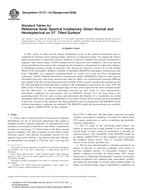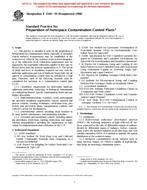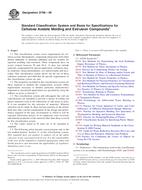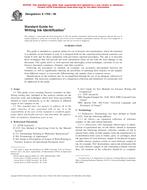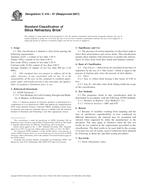ASTM G173-03(2008)
- Standard Tables for Reference Solar Spectral Irradiances: Direct Normal and Hemispherical on 37 degrees ; Tilted Surface
- standard by ASTM International, 06/01/2008
- Publisher: ASTM
$38.00$76.80
1.1 These tables contain terrestrial solar spectral irradiance distributions for use in terrestrial applications that require a standard reference spectral irradiance for hemispherical solar irradiance (consisting of both direct and diffuse components) incident on a sun-facing, 37° tilted surface or the direct normal spectral irradiance. The data contained in these tables reflect reference spectra with uniform wavelength interval (0.5 nanometer (nm) below 400 nm, 1 nm between 400 and 1700 nm, an intermediate wavelength at 1702 nm, and 5 nm intervals from 1705 to 4000 nm). The data tables represent reasonable cloudless atmospheric conditions favorable for photovoltaic (PV) energy production, as well as weathering and durability exposure applications.
1.2 The 37° slope of the sun-facing tilted surface was chosen to represent the average latitude of the 48 contiguous United States. A wide variety of orientations is possible for exposed surfaces. The availability of the SMARTS model (as an adjunct, ADJG173CD ) to this standard) used to generate the standard spectra allows users to evaluate differences relative to the surface specified here.
1.3 The air mass and atmospheric extinction parameters are chosen to provide (1) historical continuity with respect to previous standard spectra, (2) reasonable cloudless atmospheric conditions favorable for photovoltaic (PV) energy production or weathering and durability exposure, based upon modern broadband solar radiation data, atmospheric profiles, and improved knowledge of aerosol optical depth profiles. In nature, an extremely large range of atmospheric conditions can be encountered even under cloudless skies. Considerable departure from the reference spectra may be observed depending on time of day, geographical location, and changing atmospheric conditions. The availability of the SMARTS model (as an adjunct (ADJG173CD )to this standard) used to generate the standard spectra allows users to evaluate spectral differences relative to the spectra specified here.
Related Products
ASTM E1548-93(1998)
Standard Practice for Preparation of Aerospace Contamination Control Plans..
$23.00 $46.80
ASTM D706-09
Standard Classification System and Basis for Specifications for Cellulose Acetate Molding and Extrus..
$26.00 $52.80

